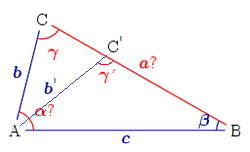Traverse Correction - Bowditch Method
In Traversing the lengths of the line are measured by chain or a tape and the directions are fixed by the compass or theodolite or by forming angles with chain and a tape. The latest instruments like total station captures the co-ordinates of the points along with elevations. These instruments are also capable of recording and string the distances and angles replacing the conventional methods.
There are two types of traverse surveying i.e. Closed Traverse and Open Traverse.
- Closed Traverse:
When a series of connected lines form a closed circuit, ie. When the finishing point coincides with the starting point, then it is called as a closed traverse. These closed traverse surveys has many applications like fixing the boundaries of ponds, forests etc..
- Open traverse :
When a sequence of connected lines extends along a general direction and does not return to the starting point, it is known as ‘open traverse’ or ‘unclosed traverse’.
Traverse Correction Procedure
Present techniques used in traversing using total station as a open traverse. The steps are as described below…
- GPS pair points are fixed at a convenient distance, approximately about 3 to 5km. Care has to be taken that the pair of GPS points is fixed at a reliable distance (at least 60m is advised for better results) and on good monuments. These points are fixed in such a way that they are clearly inter visible and should cater for placing the total station firmly on the GPS stations,
- Total station is to be checked for its calibration, prism constants for the prisms to be set in the instrument to avoid errors.
- Total station is then used to conduct the traverse between the GPS points. This type of traverse ensures that the survey is started from a known pair of points and is closed on known pair of points. Care has to be taken that the last bearing is also taken for correcting the misclosures.
- There are several methods to correct the traverse misclosures. However, in most of the cases Bowditch rule is considered to be most reliable. The other methods like transit method, Crandall method, Least Square Methods are used very rarely. The most accurate method which is known as a misclosures correction by the least square method is used when the accuracy required is very high. This method finds itself applicable in the projects like tunnel works.
- Bowditch Rule
- Whole Circle Bearing
- Quandrantal Bearing












![{\displaystyle {\frac {a-b}{a+b}}={\frac {\tan[{\frac {1}{2}}(\alpha -\beta )]}{\tan[{\frac {1}{2}}(\alpha +\beta )]}}.}](https://wikimedia.org/api/rest_v1/media/math/render/svg/3b7a4a3592aa66976f1d34bbbb403daa392f9fdf)

![{\displaystyle {\begin{aligned}\alpha &=\arccos {\frac {b^{2}+c^{2}-a^{2}}{2bc}}\\[4pt]\beta &=\arccos {\frac {a^{2}+c^{2}-b^{2}}{2ac}}.\end{aligned}}}](https://wikimedia.org/api/rest_v1/media/math/render/svg/468caceefca9cadbcccf4071a44d9c3107dd5b33)











